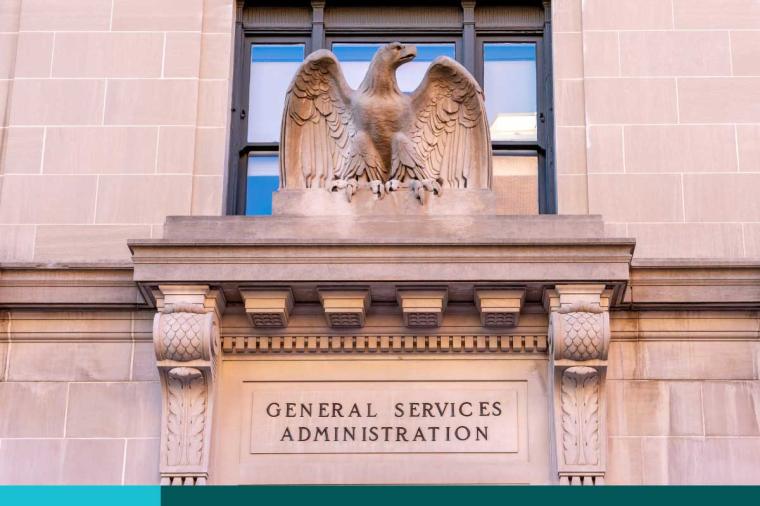3 DoD Software Modernization Priorities You Need to Know About

"We are making progress. This really is not just about technology. This is about changing our processes changing our approach to delivering and operating technology to IT systems and our cyber mechanical warfare systems as we move forward," said Robert Vietmeyer, DoD Director for Cloud and Software Modernization.
There has been a lot of buzz around the need to modernize software in the federal space and the Department of Defense (DoD) is no exception. In February 2022, the Deputy Secretary of Defense, Kathleen Hicks, signed off on a memorandum that highlighted the need for a software modernization strategy to advance the DoD’s software capability. In a recent forum held by Executive Mosaic Inc., the focus was on the DoD’s efforts to modernize its software capability.
The DoD’s software modernization strategy focuses on three areas: 1) accelerate the DoD Cloud environment, 2) establish a software factory ecosystem for the DoD and 3) enable resilience and speed in its software capabilities.
- Cloud Environment
During the forum, it was clear that the ability to deliver software updates quickly for the DoD is critical to military operations, so that updates such as threat detection can be sent to Soldiers in the field of operations in a timely manner. To modernize its software capabilities, the Office of the Secretary of Defense (OSD) Director for Cloud and Modernization, Robert Vietmeyer, emphasized the need to improve the DoD’s cloud technology through its infrastructure, DevSecOps tooling and by implementing the proper design patterns for both. The advantage of commercial cloud infrastructure according to Vietmyer, would be to enable the DoD to deploy applications worldwide regardless of their location. The DoD is focusing on edge cloud computing environment and collaborating with the intelligence community and military departments to explore where existing technologies like Azure Stack and AWS Outpost could build seamless cloud environments to extend into foreign allies’ soil like Japan and Europe. This so-called multi-tenant environment would enable seamless integration of technologies like Snowballs and Azure Stack Edge or equivalent vendors to build out an operational edge. Once these platforms become the DoD operational environments, the DoD can build advanced, resilient system engineering into those environments where the DOD can apply the Zero Trust framework to its applications. Here, technology vendors and channel partners can leverage their capability solutions and explore strategies to support the expansion of the DoD cloud infrastructure into U.S. allies’ territories. Technology vendors and channel partners that have an established organizational presence in these countries with cultural and linguistic fluency would be a welcome bonus.
- Software Factory Ecosystem and Resilience in Software Capability
To develop resilience and speed in its software capability, the DoD is focusing on expanding system engineering approaches that are also bringing changes to technology partners. Beginning with DevSecOps, the DoD is implementing a seamless integration of development, security and operations supported by automated platforms to raise its cyber posture. Software factories are seen as an operational system that incorporates development and security processes seamlessly within the cybersecurity accreditation boundary. In practical terms, the software development and security teams, regardless of their physical location, would have a direct link to the operations team, where the software is deployed. The system would be supported by services and tools, including artificial intelligence (AI), to provide continuous integration and continuous delivery (CI/CD) that would ensure cybersecurity, functionality and reliability are maintained. The clear advantage of this framework is that it allows the DoD to push for changes rapidly into the environment and apply the pervasive zero trust framework at all stages of DevSecOps. That said, technology vendors and channel partners should be keen to offer the following while engaging DoD on their software modernization efforts:
- Provide technical competencies that included seasoned process management, high-performing IT talents and strong collaborators across multifaceted environments
- Engineer seamless integration of legacy and multi-cloud solutions within the Zero Trust framework
- Leverage AI to increase speed and efficiency in processing data but focus on providing the best end-user experience
- Emphasize relevant risk management portfolio and ability to apply agile solutions so that risks and errors are rapidly mitigated
- Challenges and How Industry Can Help
Moving forward with its software modernization efforts, the DoD highlighted key challenges that it still needs to overcome. Cloud infrastructure building, for instance, experiences various levels of adoption among followers. Factors that could facilitate adoption need to be identified to support its infrastructure evolution. This is similar to DevSecOps where people still think of the software development, security vetting and application deployment as being separate and unrelated to one another. This traditional view presents roadblocks to the DoD’s mission of integrating the DevSecOps process seamlessly. Software acquisition has also been deemed a slow process and the DoD is looking for options that are more agile to meet its demands for rapid software delivery. So, what can industry partners do to help the DoD in its software modernization efforts? Specifically, the DoD could use assistance in examining the current model or designs of the software development process, its implementation, and the tooling; then figuring out ways to advance the new approach that could support a more agile process of software modernization. Additionally, having a sufficient workforce to address the software advancement remains an issue for DoD that vendors can assist with via popular DoD contracting vehicles.
"We cannot do this without our industry partners. And I think it's an exciting journey. It's one where the defense department needs to be and one that is going to be increasingly important across all of all industry in American society as we move forward…," said Robert Vietmeyer, DOD Director for Cloud and Software Modernization.
To get more TD SYNNEX Public Sector Market Insight content, please visit our Market Intelligence microsite.
About the Author: Toan Le is a senior analyst on the TD SYNNEX Public Sector Market Insights team covering the Department of Defense and intelligence community.


































